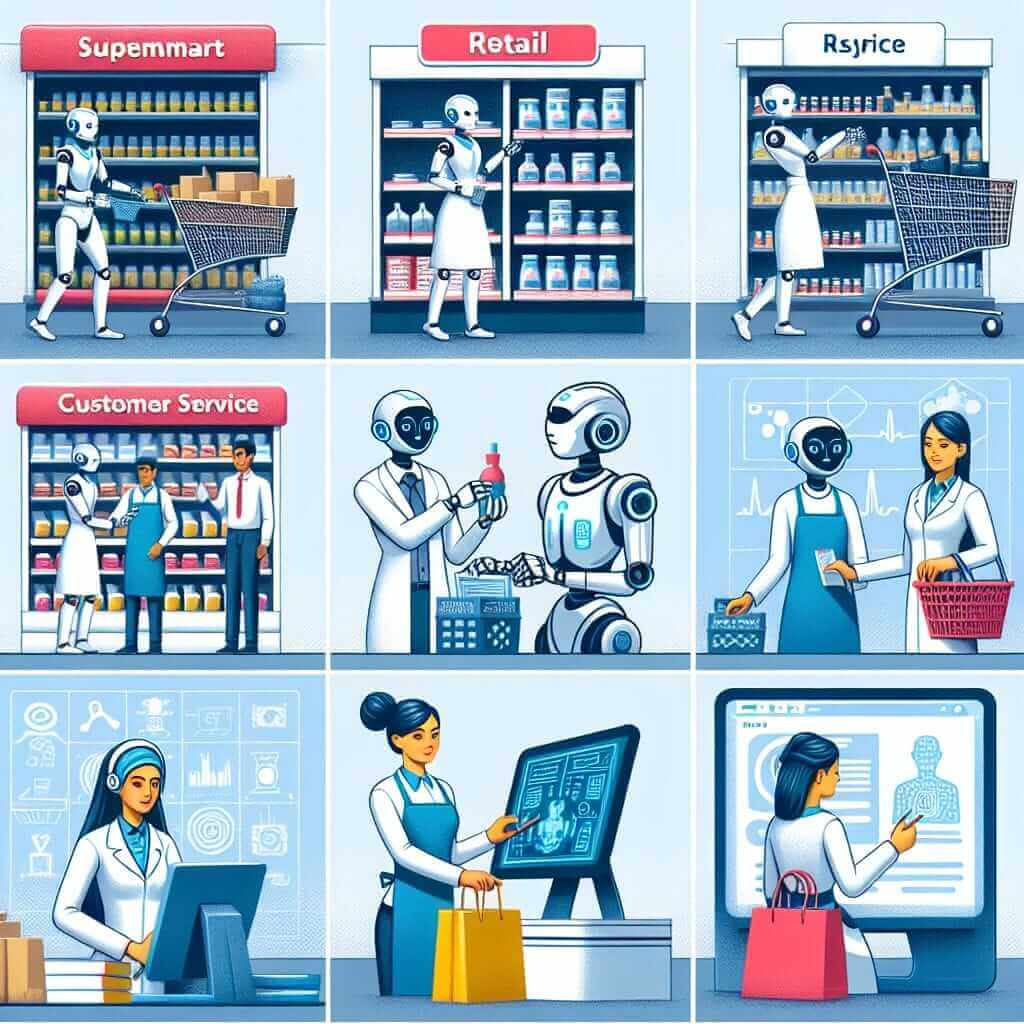The Reading section of the IELTS exam can be challenging, particularly when it comes to understanding complex topics such as automation’s impact on the service industry. This is a subject that has gained prominence due to its relevance in today’s technologically advanced world. Understanding how automation affects the service industry can help prepare you for similar themes in the Reading section of the IELTS exam. Based on data from internet analysis, this topic has appeared multiple times in previous exams due to its social and economic significance, suggesting a good probability of resurfacing in future tests.
Reading Practice Test
Reading Passage – Hard Text
Automation and the Service Industry
Automation has increasingly become a vital element in the transformation of the service industry. From retail and hospitality to healthcare and customer service, the integration of automated systems has considerably altered operational dynamics.
Historically, the service industry has relied heavily on human labor. However, the advent of advanced technologies such as robotics, artificial intelligence (AI), and machine learning has brought about a paradigm shift. These technologies are not only enhancing operational efficiency but also reshaping job roles.
In retail, automation manifests in various forms—self-checkout systems, automated stock replenishment, and personalized marketing through AI algorithms. Customers experience faster checkouts with minimal human interaction, and retailers reduce operational costs and errors. Similarly, the hospitality sector boasts automated check-in kiosks, AI-driven concierge services, and robotic room service, ensuring streamlined operations and elevated customer experiences.
Healthcare automation spans robotic surgeries, AI diagnostics, and automated administrative tasks. Robots assist surgeons in performing intricate procedures with greater precision, while AI algorithms predict health outcomes and suggest treatments. Consequently, patients receive timely and accurate medical attention, enhancing overall healthcare quality.
Customer service automation involves chatbots and virtual assistants, capable of handling a myriad of inquiries simultaneously. These systems operate 24/7, provide instantaneous assistance, and reduce the workload on human agents. Consequently, companies can offer consistent and efficient customer support while curbing operational expenses.
However, the surge in automation brings concerns regarding job displacement. As automated systems undertake tasks previously performed by humans, a reconfiguration of the workforce becomes imperative. Workers need to upskill and transition into roles that require intricate human abilities such as emotional intelligence, critical thinking, and problem-solving. The challenge lies in balancing technological integration with workforce development to mitigate unemployment risks.
Furthermore, ethical considerations surrounding data privacy and automated decision-making processes cannot be ignored. Ensuring transparency and accountability in automated systems is crucial to maintain public trust.
In conclusion, automation is revolutionizing the service industry by enhancing efficiency, reducing costs, and elevating customer experiences. While it poses challenges such as job displacement and ethical concerns, strategic workforce development and robust regulatory frameworks can assist in harnessing its full potential.
Questions
-
Multiple Choice
What is one of the primary benefits of automation in the retail sector?
a) Increased human interaction
b) Reduced technological reliance
c) Faster checkouts and reduced operational costs
d) Higher operational errors -
True/False/Not Given
Automation has no impact on the quality of customer service support. -
Matching Information
Match the sector with the form of automation mentioned:- Retail
- Healthcare
- Customer Service
a) Robotic surgeries
b) Self-checkout systems
c) Chatbots and virtual assistants -
Sentence Completion
Automation in the healthcare sector includes __ which assist surgeons. -
Short-answer Questions
List two roles the workforce must transition into due to automation.
Answer Key
-
Multiple Choice
Answer: c) Faster checkouts and reduced operational costs
Explanation: The text mentions that automation in retail results in “faster checkouts with minimal human interaction” and “reduces operational costs and errors.” -
True/False/Not Given
Answer: False
Explanation: The text indicates that customer service automation involves chatbots and virtual assistants “providing instantaneous assistance,” which implies an impact on quality. -
Matching Information
a) Healthcare – Robotic surgeries
b) Retail – Self-checkout systems
c) Customer Service – Chatbots and virtual assistants
Explanation: Each piece of information directly correlates to the respective sector as mentioned in the text. -
Sentence Completion
Answer: robotic surgeries
Explanation: The text explicitly states that “Healthcare automation spans robotic surgeries.” -
Short-answer Questions
Answer: Emotional intelligence, critical thinking
Explanation: The text mentions that workers need to transition into roles requiring “intricate human abilities such as emotional intelligence, critical thinking, and problem-solving.”
Common Mistakes in the Reading Section
- Keyword Matching: Students often match keywords from the question to the passage directly without understanding the context.
- Time Management: Spending too much time on difficult questions and not enough on simpler ones.
- Guessing Answers: Making guesses without thoroughly reading and understanding the text.
Vocabulary
- Paradigm Shift (noun) [ˈperəˌdaɪm ʃɪft]: A fundamental change in approach or underlying assumptions.
- Algorithm (noun) [ˈælɡərɪðəm]: A process or set of rules to be followed in calculations or other problem-solving operations, often by a computer.
- Diagnostics (noun) [daɪəɡˈnɒstɪks]: The identification of the nature and cause of something, usually related to medical conditions.
Grammar Points
- Relative Clauses: Often used to provide additional information about something without starting another sentence.
- Example: Customers experience faster checkouts with minimal human interaction, which enhances operational efficiency.
- Passive Voice: Frequently used in academic writing to focus on the action rather than the subject.
- Example: Automation has been integrated into various sectors of the service industry.
Tips for a High Reading Score
- Practice Regularly: Consistent practice with various texts helps improve reading speed and comprehension.
- Expand Your Vocabulary: Build a robust vocabulary by reading widely and noting down unfamiliar words.
- Understand Question Types: Familiarize yourself with different question types in the IELTS reading section.
- Develop Skimming and Scanning Skills: Learn to quickly identify key information and main ideas in the text.
- Time Management: Practice with a timer to get used to the pace needed to complete the Reading section within the allocated time.

By taking these steps, you’ll be well-prepared to tackle the Reading section of the IELTS exam and understand complex topics like the impact of automation on the service industry. Good luck!